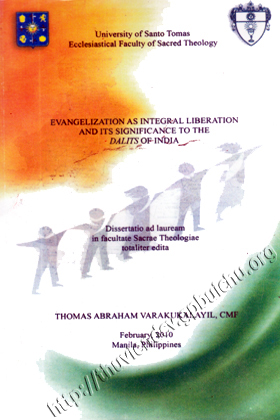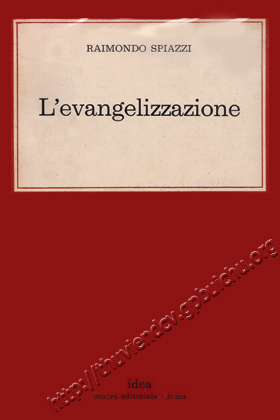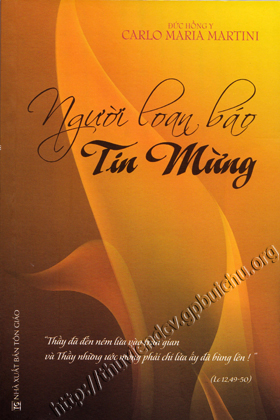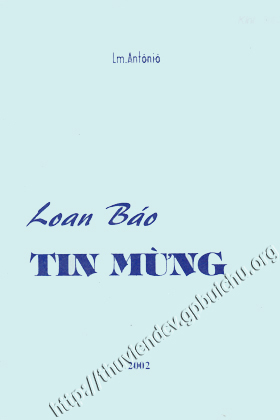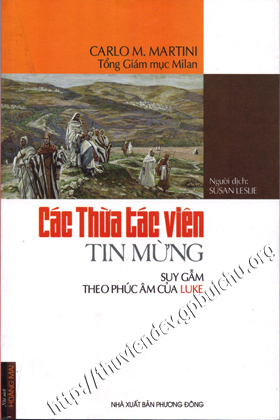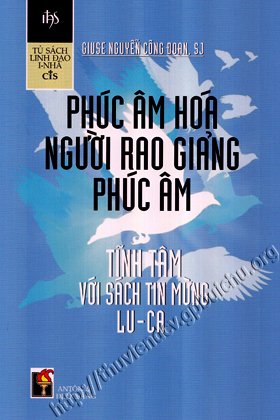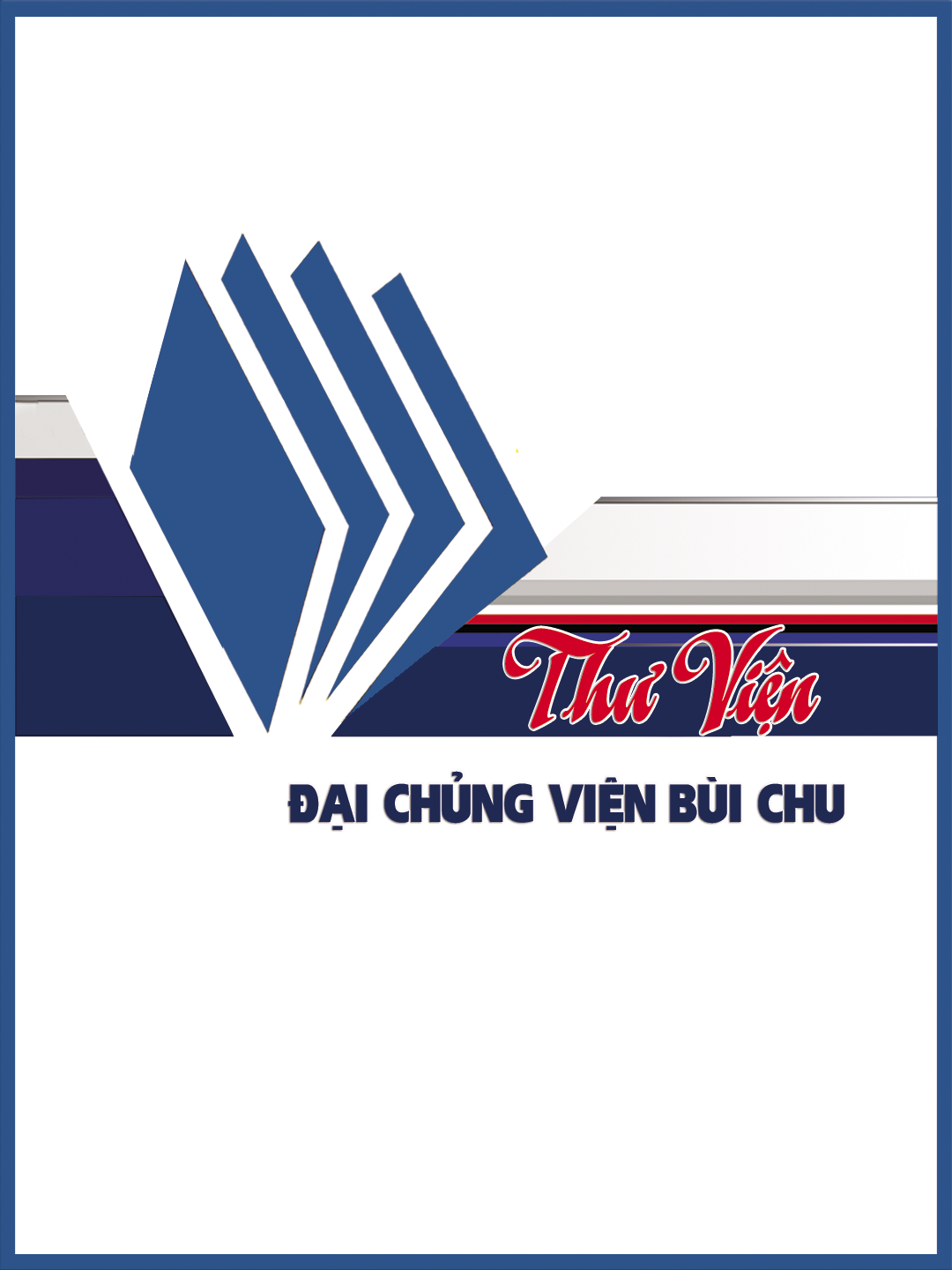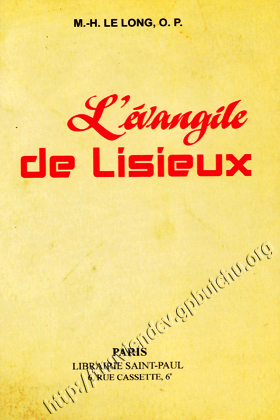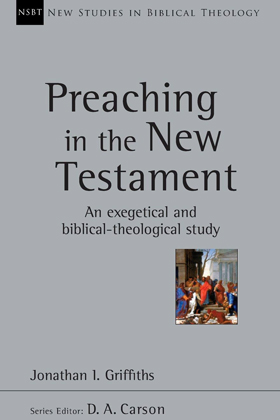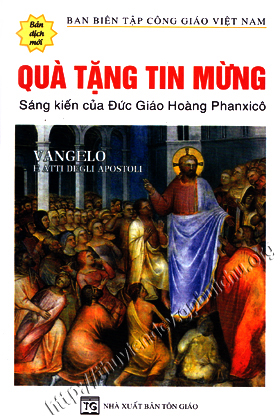| A. Background of the Study |
1 |
| B. Statement of the Problem |
8 |
| C. Significance of the Study |
9 |
| D. Objectives of the Study |
11 |
| E. Scope and Limitation of the Study |
12 |
| F. Review of Related Literature |
13 |
| G. Research Methodology |
21 |
| H. Definition of Terms |
23 |
| I. Structure of the Dissertation |
24 |
| Introduction |
26 |
| A. THE HISTORICAL PERSPECTIVE |
26 |
| 1. A Brief Geographical Background |
27 |
| 2. A Brief History of India |
30 |
| 3. The Religious Heritage of India |
32 |
| B.THE ORIGIN OF THE CASTE SYSTEM AND THE DALIT OPPRESSION |
36 |
| Caste System |
37 |
| 2. The Caste System: Division of the Hindu Society |
41 |
| a. Brahmins |
44 |
| b. Kshatriya |
45 |
| c. Vaisya |
47 |
| d. Sudras |
47 |
| e. Dalits |
49 |
| 3. The Dalits: A Historical Perspective |
54 |
| a. The Origin of the Dalits |
54 |
| b. Who are the Dalits? |
55 |
| 4. The Dalit Oppression: A Descriptive Study |
57 |
| a. The Dehumanizing Life Situation of the Dalits |
63 |
| b. Karma and ‘Divinization’ of Oppression |
73 |
| c. The Dalits and their Struggle for Justice |
78 |
| 1) The Dalit Liberation Movements till 1700 A.D. |
80 |
| the British Rule: 1700 A.D. - 1947 A.D |
84 |
| 3) The Dalit Liberation and the Post Independent India |
89 |
| 5. The Christian Approach and the Dalits |
93 |
| a. A Brief History of the Christianity in India |
94 |
| b. The Discriminatory Attitude towards the Christian Dalits 100 |
100 |
| c. The Dalit Response to the Evangelizing Mission of the Church |
107 |
| d. The Caste Feeling Within the Church: A Reality? |
109 |
| 6. The Indian Constitution and the Rights of the Dalits: |
116 |
| a. The Constitutional Rights of the Dalits: A Review |
117 |
| b. The Implementation of the Constitutional Rights: A Review |
120 |
| Introduction |
124 |
| A. EVANGELIZATION AS INTEGRAL LIBERATION IN THE OLD TESTAMENT |
125 |
| 1. Yahweh and His Missionary Sending |
126 |
| a. Call of Abraham and Spiritual Liberation of Humanity |
127 |
| b. Sending of the Prophets: Spiritual Liberation arid Social Justice |
128 |
| c. Israel: The Chosen Race for the Birth of Jesus the Integral Liberator |
131 |
| 2. The Exodus Event as Model for Integral Liberation of the Dalits |
134 |
| a. The Exodus Event and the Liberation of the Israelites |
134 |
| b. Yahweh and His Concern for the Oppressed |
136 |
| c. The Oppressed Dalits and their Integral Liberation in Yahweh |
138 |
| 3. The Old Testament Prophets and Integral Liberation of the Dalits |
140 |
| a. Prophets as the Messengers of Yahweh |
141 |
| b. Prophets and their Concept of Integral Liberation |
143 |
| 4. The Wisdom Literature and Integral Liberation of the Dalits |
146 |
| a. Yahweh as the Defender of the Oppressed |
146 |
| b.Exhortation ofYahweh for Social Justice |
148 |
| LIBERATION IN THE NEW TESTAMENT |
149 |
| 1. Mission of Jesus: Mercy to the ‘Outcastes’ |
150 |
| a. Jesus: Universal Call for Conversion and the Outcastes |
151 |
| b. Life Witness of Jesus: Friend of the Outcastes ’ |
152 |
| It’s Relevance to the Dalits |
155 |
| a. Jesus and His Teachings on Integral Liberation |
157 |
| b. Liberation under the Fatherhood of God |
160 |
| c. The Gospel of Luke: Preferential Gospel for the Dalits |
163 |
| C. THE CHURCH AND INTEGRAL LIBERATION |
167 |
| 1. The Concern of the Church for Human Rights and the Dalits |
170 |
| a. The Church and her Teachings on Human Rights |
172 |
| b. The Violation of Human Rights |
177 |
| It’s Relevance to the Dalits |
179 |
| a. The Right for Just Wage |
181 |
| b. The Right of the Oppressed to Form Association for their Liberation |
183 |
| of Wealth and the Landless Dalits |
185 |
| a. Unequal Distribution of Wealth as a Social Evil |
188 |
| b. Design of God and Distribution of Wealth |
191 |
| 4. The Church and Spiritual Liberation of the Dalits |
193 |
| a. Spiritual Liberation: It’s Significance |
194 |
| b. Interior Conversion |
199 |
| c. Brotherhood of Humanity for Liberation |
202 |
| d. Contemplation in Action |
205 |
| e. Liberator as Mystic and Man of Action |
209 |
| 5. The Church and Material Liberation of the Dalits |
214 |
| a. The Church and Material / Temporal Liberation of Man |
215 |
| b. Material Liberation and Option for the Poor |
218 |
| c. Spirit- filled Man: The Principal Agent of Material Liberation |
222 |
| Chapter Summary |
227 |
| Introduction |
229 |
| METHODOLOGY |
229 |
| 1. The Formulation of Liberation Methodology: Three Levels |
230 |
| a. Popular Theology and the Views of the Dalits |
230 |
| b. Pastoral Theology and the Ideas of the Missionaries among the Dalits |
231 |
| c. Professional Theology and the Expertise of the Theologians for the Dalits |
232 |
| d. Integration of Three Levels |
232 |
| 1) Integration: The Connecting Link |
234 |
| 2) Goal of Integration |
235 |
| 2. Implementation of Liberation Methodology |
236 |
| a. Implementation: Preparatory Stage |
237 |
| b. Socio-analytical Mediation and the Dalit Liberation |
239 |
| c. Hermeneutical Mediation for Christian Liberation for the Dalits |
242 |
| d. The Practical Mediation and the Liberation of the Dalits |
248 |
| e. Modern Liberation Movements: An Assessment |
254 |
| ... |
